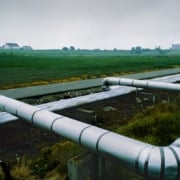Spring 2023 Agenda Previews Continued U.S. Significant Environmental Regulatory Action
On June 13, 2023, the Biden administration released the 2023 Spring Unified Agenda of Regulatory and Deregulatory Actions (Agenda). The Agenda lists federal agencies’ planned “short-term” regulatory actions to be taken over the next 12 months and “long-term” actions under development. The dates listed in the Agenda are based on publication dates in the Federal Register. Stakeholders should take note, as the Agenda provides a window into the administration’s priorities and strategies:
- Pre-election priorities. With the next election less than 18 months from now, the Agenda identifies the suite of regulatory actions the administration is seeking to address ahead of the 2024 election. For the Environmental Protection Agency (EPA), the Agenda highlights significant EPA activity related to per- and polyfluoro alkyl substances (PFAS), climate change, and air quality as well its continued process of reconsidering Trump administration actions.
- Anticipating potential repeal under the Congressional Review Act action. The Congressional Review Act (CRA) grants Congress the power to repeal final rules within 60 legislative days after the rule is submitted to Congress and published in the Federal Register. With the makeup of the next Congress uncertain, that may drive the administration to push agencies to act before the expected CRA cutoff date in May 2024.
- A glimpse into a potential second term. The long-term actions listed in the Agenda provide a glimpse of some of the Biden administration’s regulatory plans under a potential second term.
- Only a snapshot in time. While the Agenda is a useful inventory of rules under development across the administration, the agencies consider the dates a “snapshot in time”; thus stakeholders should take note of the Agenda entries for planning purposes but expect deadlines to slip.
PFAS. The Agenda indicates that a main area of focus for the administration is addressing PFAS under a variety of EPA programs. These include the following:
- proposed rule listing certain PFAS (i.e., PFOA, PFOS, PFBS, and GenX) as hazardous constituents under the Resource Conservation and Recovery Act in August 2023
- proposed significant new use rule under the Toxic Substances Control Act (TSCA) for PFAS that have not been manufactured or processed for many years and are to be designated as inactive under TSCA Chemical Substance Inventory in December 2023
- proposed rule adding certain PFAS to the Toxic Releases Inventory under the Emergency Planning and Community Right-to-Know-Act in December 2023, with a finalized rule to be published in November 2024
- Final PFAS National Primary Drinking Water Regulation in January 2024
- an Advanced Notice of Proposed Rulemaking relating to how to address PFAS-related designations under the Comprehensive Environmental Response, Compensation, and Liability Act in June 2024
Climate. Climate change remains a top EPA priority, listing the following actions:
- final New Source Performance Standards (NSPS) and emissions guidelines for crude oil and natural gas facilities in August 2023
- new regulations regarding the management of certain hydrofluorocarbons and their substitutes under the American Innovation and Manufacturing Act of 2020 in September 2023
- new emissions standards for heavy-duty vehicles beginning with model year 2027 in December 2023
- new emission standards for light- and medium-duty vehicles beginning with model year 2027 in March 2024
- new NSPS and emission guidelines for fossil-fuel-fired electric generation units in April 2024
- proposed rules regarding the Methane Emissions and Waste Reduction Inventive Program under the Inflation Reduction Act of 2022 in July and October 2023, with a final rules to be published in April and May 2024
Air quality. EPA will also be taking significant action relating to air quality, including:
- complete reconsideration of the National Ambient Air Quality Standards (NAAQS) for Particulate Matter in October 2023
- proposed rule governing Secondary NAAQS for NOx and SO2 in March 2024
- proposed rule relating to EPA’s Reconsideration of Ozone NAAQS in April 2024
Further reconsideration of Trump administration rules. In addition, the Agenda provides updates on EPA’s reconsideration of other Trump-era rulemakings, including
- proposed rule on revisions to the Lead and Copper National Primary Drinking Water Regulations in September 2023
- final rule governing the Reclassification of Major Sources and Area Sources under Section 112 of the Clean Air Act in September 2023
- finalization of revised Accidental Release Prevention Requirements under the Risk Management Program in December 2023
The Agenda also indicates that the U.S. Army Corps of Engineers will be proposing new rules relating to water quality certification requirements under Section 401 of the Clean Water Act in January 2024, while the Council on Environmental Quality continues to develop actions under the National Environmental Policy Act (NEPA), including a notice of final guidance regarding the consideration of greenhouse gas emissions and climate change in February 2024 and the “step two” NEPA implementing regulation revisions proposed rule expected in September 2023.
This post is as of the posting date stated above. Sidley Austin LLP assumes no duty to update this post or post about any subsequent developments having a bearing on this post.



